- Joined
- Oct 9, 2007
- Messages
- 47,884 (7.38/day)
- Location
- Dublin, Ireland
| System Name | RBMK-1000 |
|---|---|
| Processor | AMD Ryzen 7 5700G |
| Motherboard | Gigabyte B550 AORUS Elite V2 |
| Cooling | DeepCool Gammax L240 V2 |
| Memory | 2x 16GB DDR4-3200 |
| Video Card(s) | Galax RTX 4070 Ti EX |
| Storage | Samsung 990 1TB |
| Display(s) | BenQ 1440p 60 Hz 27-inch |
| Case | Corsair Carbide 100R |
| Audio Device(s) | ASUS SupremeFX S1220A |
| Power Supply | Cooler Master MWE Gold 650W |
| Mouse | ASUS ROG Strix Impact |
| Keyboard | Gamdias Hermes E2 |
| Software | Windows 11 Pro |
ASUS today launched the Republic of Gamers (ROG) Ryujin line of all-in-one liquid CPU coolers for AMD Ryzen Threadripper processors. Positioned above the ROG Ryuo series, which opened to pre-orders earlier this month, the Ryujin was first showcased at the 2018 Computex. These coolers are characterized by a somewhat square pump-block design that resembles a that of a chipset heatsink; but is embedded with a 1.77-inch color OLED display that shows an animated ROG logo by default, but can be reprogrammed to show just about anything, such as clan logos, live CPU temperature/load monitoring, etc. Another innovation that sets the Ryujin pump-block apart from every other Asetek cooler out there, is a tiny lateral-blower fan embedded into the block, which ASUS claims can bring down CPU VRM and M.2 SSD temperatures by up to 20°C.
The Ryujin series comes in two variants based on radiator size, the Ryujin 240 (120 mm x 240 mm radiator), and Ryujin 360 (120 mm x 360 mm radiator). These are 27 mm-thick aluminium radiators, which are ventilated by matte-black Noctua IndustrialPPC 120 mm PWM fans that are part of the package. These fans each spin between 450 to 2,000 RPM, pushing up to 121.8 CFM of air, with noise output up to 31 dBA. As we mentioned earlier, the product pages for both models mentions that the coolers only support AMD socket TR4, with full coverage for the AMD Ryzen Threadripper integrated heatspreader. This could help ASUS command a slightly high price, given that it's catering only to the market that can afford HEDT processors.
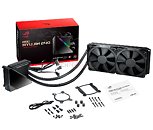
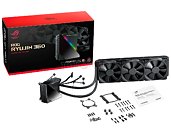
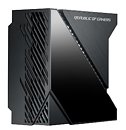
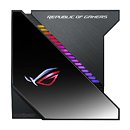
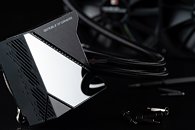
View at TechPowerUp Main Site
The Ryujin series comes in two variants based on radiator size, the Ryujin 240 (120 mm x 240 mm radiator), and Ryujin 360 (120 mm x 360 mm radiator). These are 27 mm-thick aluminium radiators, which are ventilated by matte-black Noctua IndustrialPPC 120 mm PWM fans that are part of the package. These fans each spin between 450 to 2,000 RPM, pushing up to 121.8 CFM of air, with noise output up to 31 dBA. As we mentioned earlier, the product pages for both models mentions that the coolers only support AMD socket TR4, with full coverage for the AMD Ryzen Threadripper integrated heatspreader. This could help ASUS command a slightly high price, given that it's catering only to the market that can afford HEDT processors.





View at TechPowerUp Main Site









